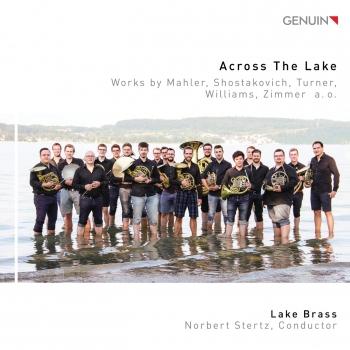Lake Brass & Norbert Stertzt
Biography Lake Brass & Norbert Stertzt
Lake Brass
The Lake Brass ensemble was founded in 2010 by four horn players from the Lake Constance region. After starting out purely as a horn quartet and expanding to an octet under the direction of Szabolcs Galanthay, the group quickly grew to its current ensemble of twelve horns, two tenor horns, a tuba, and three percussionists.
Initially consisting mainly of amateurs, students from throughout the world soon joined the ensemble; all enrolled at renowned universities in Germany and Switzerland or already employed in orchestras in Germany and abroad. Since 2017 Norbert Stertz, Professor of Horn at the Hochschule für Musik Detmold, has served as director of Lake Brass.
The love of ensemble playing brings the musicians together regularly at Lake Constance. One of the group’s qualities is its mixing of cultural spheres: the musicians hailing from such countries as Germany, Switzerland, Italy, Hungary, Colombia, and the USA, contribute their sound ideals and playing traditions to the ensemble, joining together to create the incomparable sound of Lake Brass.
In this way the ensemble has developed wonderfully over the past eight years, successfully performing and interpreting even the most challenging works of the repertoire. Compared to most horn ensembles that consist only of horns, Lake Brass stands out through an unusual feature: in addition to the twelve horns which play simultaneously in the form of three horn quartets, it also includes two tenor horns and a contrabass tuba.
This group of low brass instruments is, as the name suggests, mainly responsible for the lower registers. On this recording we can also hear the very unique timbres that result when the group blends with the rest of the ensemble.
Richard Wagner was already interested in expanding the sound possibilities of horn writing, arranging for so-called Wagner tubas to be made for Der Ring des Nibelungen. With their design patterned on the tenor horn, notable for its upward-facing bell and special timbre, they significantly enhanced the tonal capabilities of composition for the horn.
Our arrangers, too, continually explore the subtleties of intonation possible with these two groups. Their objective: to write for horns while at the same time incorporating an additional, complementary timbre as support.











